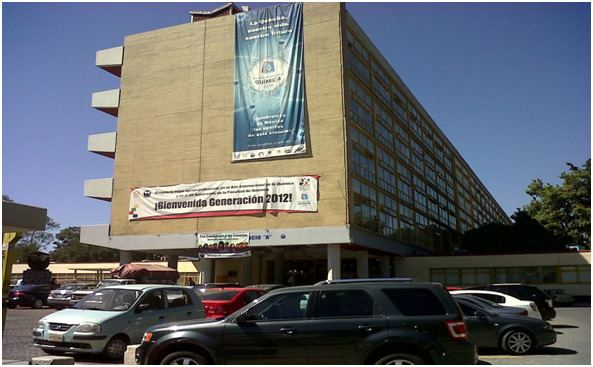Academic staff 1,274 (2013) Undergraduates 6,863 (2014) | Established September 23, 1916 Students 8,893 (2014). | |
 | ||
Director Dr. Jorge Manuel Vázquez Ramos | ||
The School of Chemistry is one of the 27 academic institutions that are part of the National Autonomous University of Mexico (UNAM). The School carries out research activities in the fields of biochemistry, analytical chemistry, organic chemistry, physical chemistry, food chemistry, biotechnology, metallurgy, chemical engineering, pharmacy, inorganic chemistry, nuclear chemistry, theoretical chemistry and theoretical physics. The School is organized into 12 scientific departments and 4 units.
Contents
The School of chemistry also offers five 4.5-year undergraduate degrees:
Most of the School's buildings are located in the main campus of UNAM, Ciudad Universitaria (University City, south Mexico City), while two more external campuses are also part of the School, the External Complex of Tacuba (Conjunto Externo de Tacuba), in Tacuba, west Mexico City, and the Sisal Foreign Station (Estación Foránea de Sisal), in Sisal, Mérida, Yucatan, south-east Mexico.
The institution also offers graduate level studies (Master and Doctorate) in diverse areas:
In addition, the School offers several Lifelong Learning programs as well as a wide range of training certificates. The UNAM also has the Institute of Chemistry (Instituto de Química).
History
In the early 20th century, the mexican industry was strongly focused on beer brewing, mining, sugar processing, fabric and textile manufacturing and some pharmaceutical industries. However, the harsh national and international context, derived from the mexican revolution movement and the World War I affected the availability of highly skilled personnel.
Therefore, in January 1913, Juan Salvador Agraz presented an initiative to the mexican president Francisco I. Madero to create the School of Chemistry. On September 23, 1916, the mexican president Venustiano Carranza promulgated by government-decree the foundation of the National School of Industrial Chemistry (Escuela Nacional de Química Industrial, and later Escuela Nacional de Ciencias Químicas or National School of Chemical Sciences) in the town of Tacuba (north-west to Mexico City). In February 1917, the School was incorporated to the National University of Mexico (currently UNAM). In 1919, the School incorporated the degree of pharmacy to its curricula, which was until then provided by the National School of Medicine. Soon, the School established the Laboratory of Analysis and the Laboratory of Preparative Organic and Inorganic Chemistry. In a similar manner, the School installed an Ether production plant and created new buildings for fermentative, sugar and starch processing, tannery chemicals and pharmaceutical industries. The first course on Organic Chemistry Applied to Pharmacy was taught initially by Adolfo P. Castañares, who was after some years, elected as director of the School.
The degree in Chemical Engineering was later implemented in 1925 by the pioneering engineer Estanislao Ramírez. He studied in the Massachusetts Institute of Technology where he learned Unit operations from their creator, William H. Walker. Estanislao Ramírez was Professor of Industrial Physics since 1922, and 19 years after creating the degree in Chemical Engineering in the National University of Mexico, he was also founder of the degree of Industrial Chemical Engineering in the National Polytechnic Institute (IPN), in 1944.
In 1965, the National School of Chemical Sciences was awarded the rank of "Faculty", meaning it now had graduate school programs.
Noted faculty and alumni
Facilities
The School of Chemistry consists of the following buildings:
